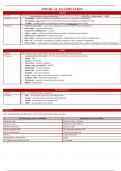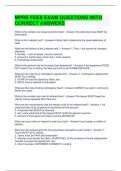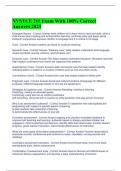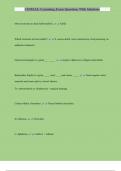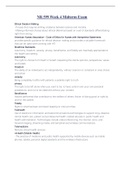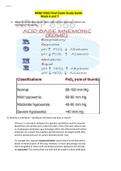Class notes
Class notes PRML133 Urinalysis & Body Fluids
- Course
- Institution
- Book
My notes comprehensively cover urine examination, detailing color variations, odor characteristics, transparency indicators such as turbidity causes (both pathologic and non-pathologic), and specific gravity implications, ensuring a thorough understanding for clinical assessment and diagnosis.
[Show more]
